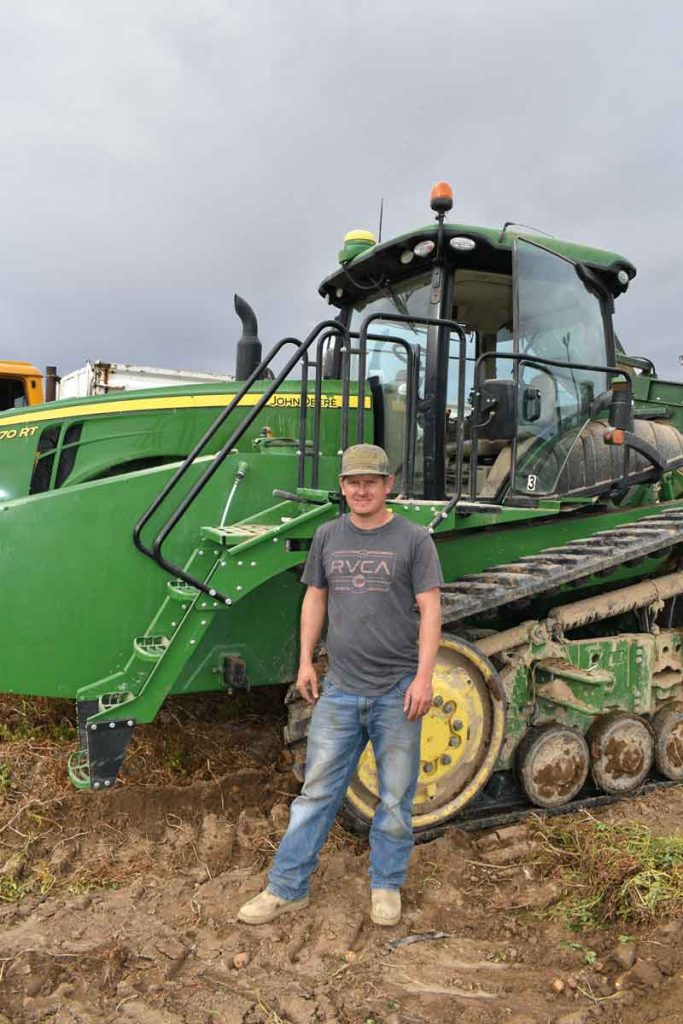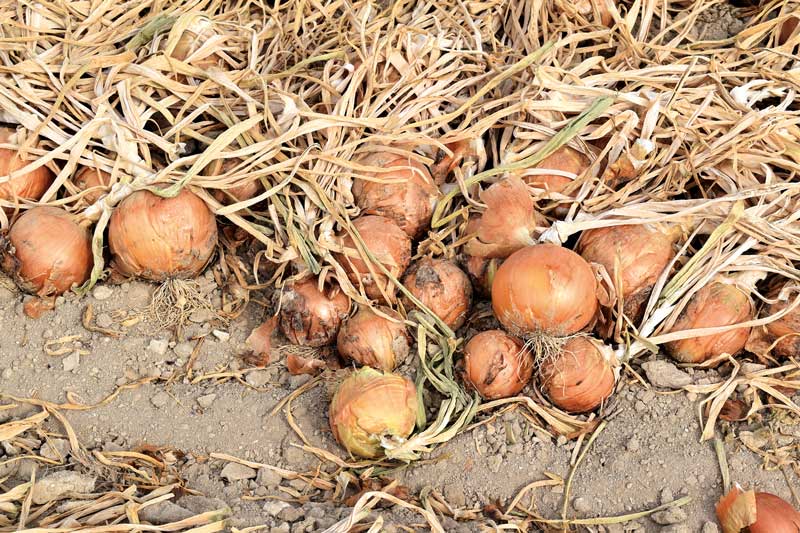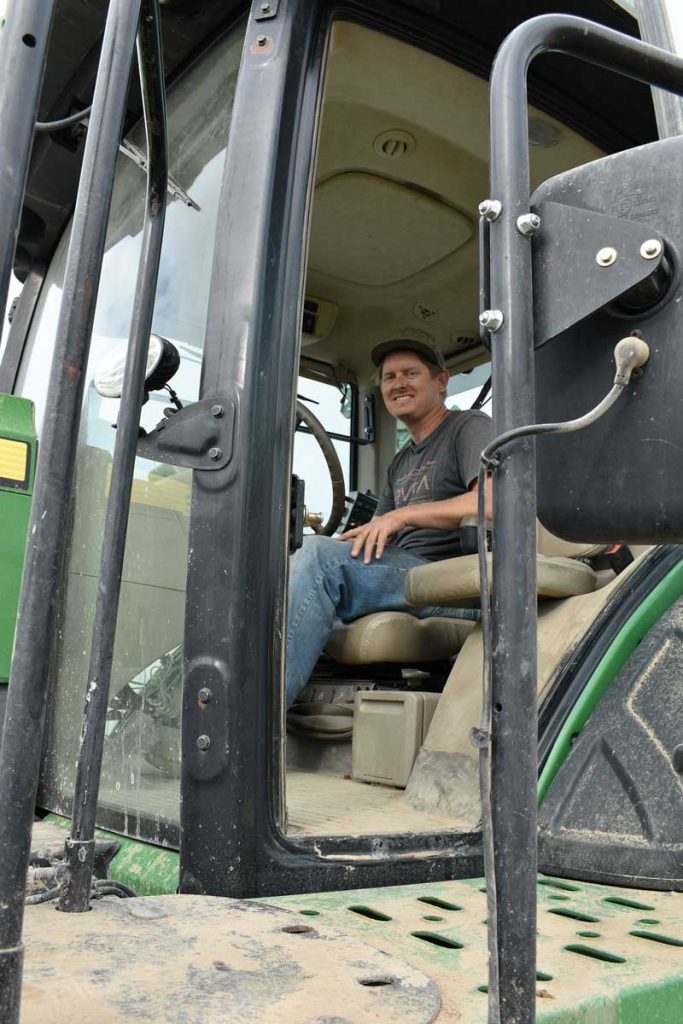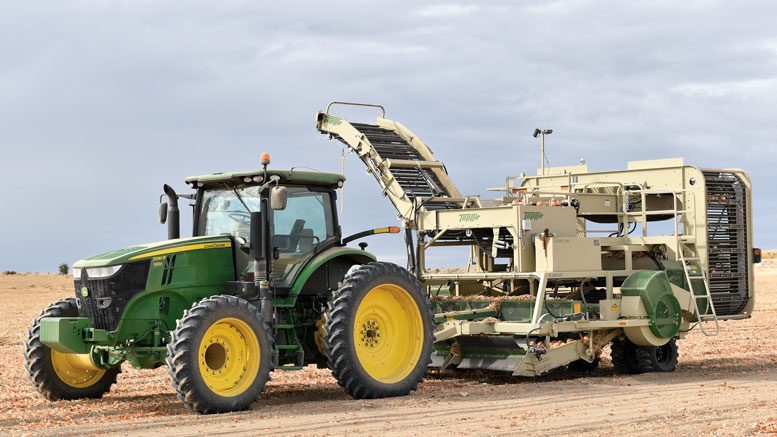Story by Allen Thayer
Photos by Dave Alexander, Publisher

The onion harvest at Flying F Inc., near Caldwell, Idaho, drew to a close as Halloween beckoned.
Grower Russell Frisby hoped to finish harvest about a week before trick-or-treaters went out for candy, but Mother Nature didn’t cooperate.
“The weather was pretty decent, but cooler than normal this season,” Frisby says. “We’ve had to stop harvest for some frost.”
A frosty fall pushed back the end of harvest from its usual end date of around the third week of October to near the end of the month.
Frisby planted 500 acres of sweet yellow Spanish Vaquero onions, one of the more successful long-day onion varieties for the grower. The variety requires 14 or more hours of daylight to initiate bulb formation and can be grown in northernmost states including Idaho, Oregon and Washington. Spanish bulb onions grown in Idaho and Oregon make up one-third of the total U.S. crop. They’re typically stored and sold later in the marketing year.

Frisby, who also grew 50 acres of red onions, is one of about
300 onion growers in the Treasure Valley of southwest Idaho and southeast
Oregon. Together, they produce more than 1 billion pounds of onions, accounting
for about 25 percent of the storage onions consumed in the U.S. Onion acres harvested in Idaho
totaled 8,100 in 2018, 8,000 in 2017 and 9,200 in 2016, University of Idaho
agricultural economist Ben Eborn reports, citing statistics from the USDA National
Agricultural Statistics Service.
Frisby
transports his harvest to Golden West Produce in Parma, Idaho, and Dickinson
Frozen Foods in Fruitland, Idaho, for processing.
Frisby also
grows Russet Burbank potatoes, corn and wheat on 3,900 acres. He employs eight
people full time and hires up to 25 workers for harvest. He’s
also raising three children, Kensley, Bailey and Blake, on the farm.

Before launching Flying F Inc., he worked at Frisby Farms for
his parents, Rod and Maureen, in Sand Hollow, Idaho. He went into agriculture after
finishing high school in 2001. He briefly worked for Arctic Cat testing
snowmobiles before going into farming full time.
“I helped
my dad manage his farm, and then in 2013, I went out on my own.”
Challenging Crop
Frisby has
grown to appreciate what it means to be an onion grower over the last seven
years.
“It’s both
a challenging and rewarding crop,” he says. “You have to be ready for whatever
elements Mother Nature throws.”
Frisby only
has to think back to April 2018 when two hailstorms hit his land.
“We saved
the onions, but the yields were decreased by 20 percent,” Frisby recalls,
adding that he also learned a lesson.
“I didn’t
have any crop insurance last year,” he says. “I bought it this year, though.”
Typically, Frisby
plants onions at the end of March depending on whether canal water or well
water is being used.
“We have to
wait to be closer to the irrigation circuit for fields under canal,” Frisby
explains.
A normal
onion harvest is anywhere from 50 to 55 tons, he says.
Frisby
serves on the Idaho-Eastern Oregon Onion Committee in Parma. The committee
meets three times per year to discuss any arising issues.
Even more
challenging than the weather is the economics of growing onions.
“It’s a
really tight market,” Frisby adds, citing all the new food safety laws and
rising equipment and labor expenses. “The cost of input is nearly double what
it was seven years ago, and onion prices are less. It’s pretty tough right
now.”



